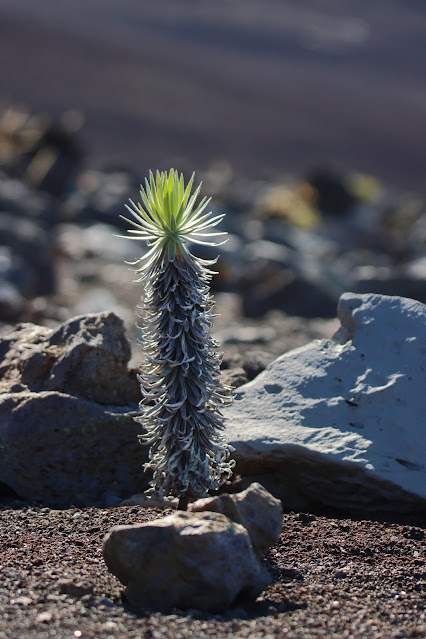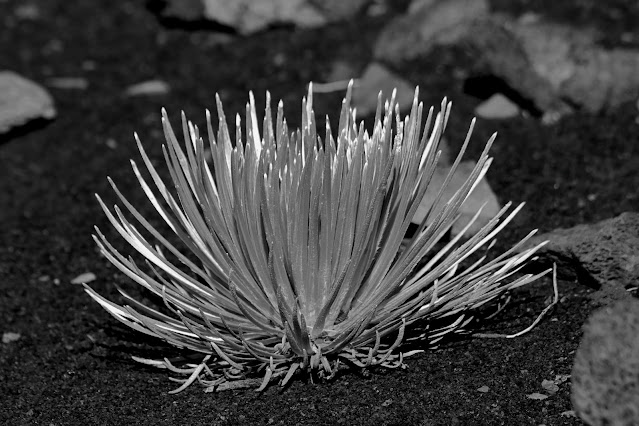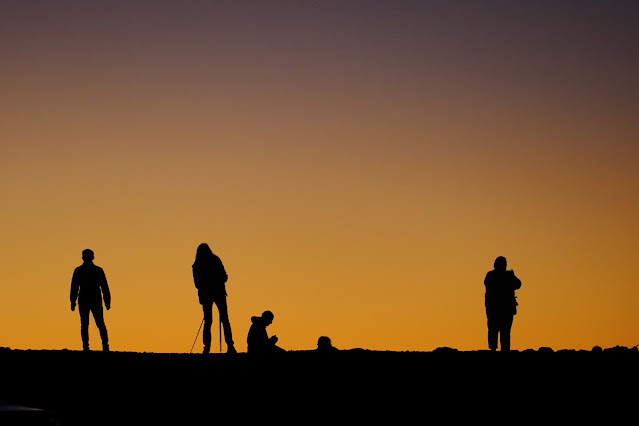Introduction:
Where?
: Haleakala National Park is located at the large summit area of Mtn. Haleakala,
at the center of east Maui island.
Google Map Link



What? :
A sleeping volcano mountain towering 10,000 feet above sea level and above the
clouds. Mtn. Haleakala is Maui's highest point, all the summit and crater are
of the mountain is declared as a National Park that offer hiking, viewing
points and unforgettable sunset/sunrise opportunities.
Due
note 1: For sunrise planning you needs to have park entrance reservation at the
previous day (https://www.recreation.gov/ticket/facility/253731), you will not
be able to enter the park without prior reservation!
Due
note 2: bring warm clothes, this is 10,000f high mountain and it can be cold up
there (especially before sunset or at night).

Links to more Blogs on Hawaii:

Due
note 3: The road to top of the mountain is well maintained but climbing up
steeply and with a lot of twist and turns. If you want to see sunrise or come
only for sunset plan for at list 1.5 hr drive up the mountain.
Due
note 4: Before you start your drive up, ensure you have at least a quarter tank
full, there are gas stations only at towns at the bottom of the mountain.
Due
note 5: safety: the road up the mountain is going through open grassland, you
can find cows on the road. Drive carefully, especially at night.

My
thoughts: Highly recommended trip when visiting Maui, do not miss the hike at
the volcano crater before the sunset or after your sunrise visit. Plan at list
2 hr for the hike, although it can be as short as you want. Overall, this can
be half day trip.
The
visit:
Haleakala
National Park covers the large summit area of the volcanic mountain that make
up most of Maui island. The National Park’s boundary at the mountain summit has
“fingers” that extend down all the way to the ocean, at the south east section
of the island. Those lower sections of the park include the Kipahulu area, this
is where you can find the Seven Pools and Pipiwai Trail (the visit is covered
by another blog).


The
road to the top of mount Haleakala (National Park) is well maintained but
winding and steeply climbing the 10,000f mountain, from every turn you see a
different view.
At some
point we got into the clouds and it may become foggy and rainy and after
another ascent you will probably go above the clouds layer into a clear sunny day.
After
entering the park gate, the road keeps climbing and you can find few stopping
points along the way, Leleiwi and Kalahaku Overlooks, I recommend keep driving
all the way to Haleakalä Visitor Center.
From
here you will have the best crater view and start your hike into the crater.
The
crater opening is huge, more than 10km to the other side of the crater and 1 km
deep. Far in the landscape below you can see smaller colorful volcano cones.


From
the visitor center there is a short hike to Pā Ka'oao viewing point above the
crater.
Sliding Sands Trail:
The Sliding
Sands Trail that will take you down to the crater starts at the parking lot
parallel to the road. After the short level section and viewpoint, it starts it’s long steep descent into the huge crater area, literally feeling like entering into
the stunning scenery picture.



The
view is unique, the vast smooth rocky/sandy erosion plans without almost any
vegetation and the red and orange volcano cones below looks like “out of this
planet” landscape.
Hike
down the trail as much as you want, see how the landscape change as you “get
into the picture” and once you are done descending you need to hike all the way
up, back to the parking lot.

The observatory
telescopes:
The
mountain is quite high, above clouds and the local humidity and far from any
big city, you can find here a clear sky without any light pollution. This is
the ideal place for space observatory, the government built there many space
telescopes for scientific and security usage (satellite tracking).
From Haleakalä
Visitor Center parking lot drive up to the top of the Red Hill mountain small
parking lot for best sunset and observatory view. Come early before sunset
because this smaller parking lot is getting full before sunset. Find a place on
the rim near the cars and watch the sunset going down in the west below the
clouds.




Our
visit:
When reading
recommendation what to do at the park, many recommend seeing the sunrise or
sunset from the top.
In
order to see the sunrise, you need to get up at 4am in the morning + drive 2 hr
in the dark + need to book on-line permit in advance ... we immediately chose to
see the sunset.
We
arrived somehow after noon time and hike inside the crater of the volcano for 2
hr, the huge open crater landscape at this height is completely exposed without
any vegetation and overall appearance of "Mars".
Later
we went to the upper parking lot and waited to sunset.
It was
indeed a unique view and experience; you are well above the cloud’s “blanket”
and the sun setting down below you.




Sunrise:
We did
not see the sunset, but many visitors wake up early to drive to the Haleakala
Visitor Center at the top of the mountain to watch the spectacular sunrise on the
east. As the sun peeks over the horizon, changing the night colors into the
morning red bright light above the vast sea of clouds.
The
National Park Service requires a reservation for personal and rental vehicles
to view the sunrise from the summit.
https://www.nps.gov/hale/planyourvisit/sunrise-and-sunset.htm
https://www.recreation.gov/ticket/facility/253731

www:
https://www.nps.gov/hale/index.htm
Map:
https://www.nps.gov/hale/upload/map-and-descriptions.pdf
Pictures:
- Big Island – Overview, Visit Planning and Tips
- Kauai - Island Visit and Trip Planning
- Maui – Overview, Visit Planning and Tips
- Maui - Lahaina and the North West beaches
- Maui - Īao Valley State Park
- Maui - Haleakalā National Park
- Maui - The Road to Hana
- Maui - Oheo Gulch, Haleakala National Park
- Maui - The road on the back side of Haleakala (hwy 31)

Due
note 3: The road to top of the mountain is well maintained but climbing up
steeply and with a lot of twist and turns. If you want to see sunrise or come
only for sunset plan for at list 1.5 hr drive up the mountain.
Due
note 4: Before you start your drive up, ensure you have at least a quarter tank
full, there are gas stations only at towns at the bottom of the mountain.
Due
note 5: safety: the road up the mountain is going through open grassland, you
can find cows on the road. Drive carefully, especially at night.

My
thoughts: Highly recommended trip when visiting Maui, do not miss the hike at
the volcano crater before the sunset or after your sunrise visit. Plan at list
2 hr for the hike, although it can be as short as you want. Overall, this can
be half day trip.
The
visit:
Haleakala
National Park covers the large summit area of the volcanic mountain that make
up most of Maui island. The National Park’s boundary at the mountain summit has
“fingers” that extend down all the way to the ocean, at the south east section
of the island. Those lower sections of the park include the Kipahulu area, this
is where you can find the Seven Pools and Pipiwai Trail (the visit is covered
by another blog).


The
road to the top of mount Haleakala (National Park) is well maintained but
winding and steeply climbing the 10,000f mountain, from every turn you see a
different view.
At some
point we got into the clouds and it may become foggy and rainy and after
another ascent you will probably go above the clouds layer into a clear sunny day.
After
entering the park gate, the road keeps climbing and you can find few stopping
points along the way, Leleiwi and Kalahaku Overlooks, I recommend keep driving
all the way to Haleakalä Visitor Center.
From
here you will have the best crater view and start your hike into the crater.
The
crater opening is huge, more than 10km to the other side of the crater and 1 km
deep. Far in the landscape below you can see smaller colorful volcano cones.


From
the visitor center there is a short hike to Pā Ka'oao viewing point above the
crater.
Sliding Sands Trail:
The Sliding
Sands Trail that will take you down to the crater starts at the parking lot
parallel to the road. After the short level section and viewpoint, it starts it’s long steep descent into the huge crater area, literally feeling like entering into
the stunning scenery picture.



The
view is unique, the vast smooth rocky/sandy erosion plans without almost any
vegetation and the red and orange volcano cones below looks like “out of this
planet” landscape.
Hike
down the trail as much as you want, see how the landscape change as you “get
into the picture” and once you are done descending you need to hike all the way
up, back to the parking lot.

The observatory
telescopes:
The
mountain is quite high, above clouds and the local humidity and far from any
big city, you can find here a clear sky without any light pollution. This is
the ideal place for space observatory, the government built there many space
telescopes for scientific and security usage (satellite tracking).
From Haleakalä
Visitor Center parking lot drive up to the top of the Red Hill mountain small
parking lot for best sunset and observatory view. Come early before sunset
because this smaller parking lot is getting full before sunset. Find a place on
the rim near the cars and watch the sunset going down in the west below the
clouds.




Our
visit:
When reading
recommendation what to do at the park, many recommend seeing the sunrise or
sunset from the top.
In
order to see the sunrise, you need to get up at 4am in the morning + drive 2 hr
in the dark + need to book on-line permit in advance ... we immediately chose to
see the sunset.
We
arrived somehow after noon time and hike inside the crater of the volcano for 2
hr, the huge open crater landscape at this height is completely exposed without
any vegetation and overall appearance of "Mars".
Later
we went to the upper parking lot and waited to sunset.
It was
indeed a unique view and experience; you are well above the cloud’s “blanket”
and the sun setting down below you.




Sunrise:
We did
not see the sunset, but many visitors wake up early to drive to the Haleakala
Visitor Center at the top of the mountain to watch the spectacular sunrise on the
east. As the sun peeks over the horizon, changing the night colors into the
morning red bright light above the vast sea of clouds.
The
National Park Service requires a reservation for personal and rental vehicles
to view the sunrise from the summit.
https://www.nps.gov/hale/planyourvisit/sunrise-and-sunset.htm
https://www.recreation.gov/ticket/facility/253731






































































Comments
Post a Comment